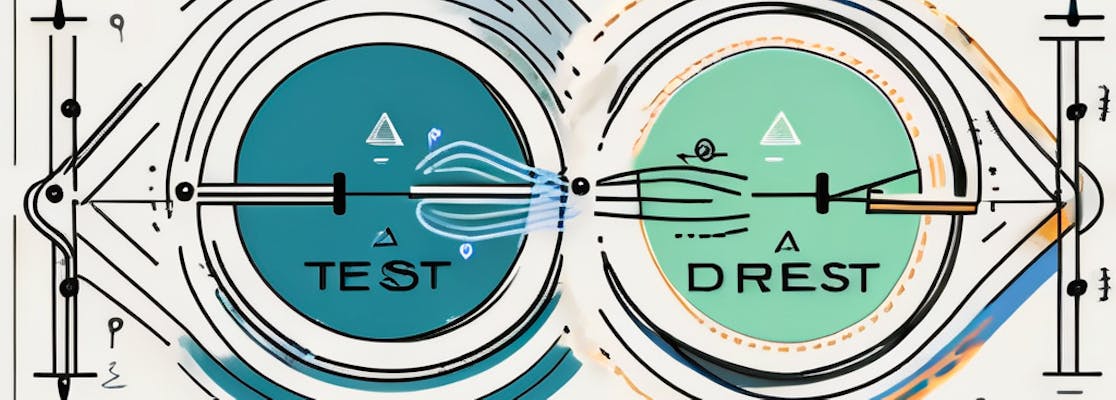PSAT vs SAT – What’s The Difference & Which Test is Right For You?
Updated February 29, 2024
- Understanding the Purpose of the PSAT and SAT
empty
empty
- PSAT Versus SAT: Key Similarities and Differences
empty
empty
- Exam Format and Structure: PSAT vs SAT
- College Admissions and the Role of PSAT and SAT Scores
- Making an Informed Choice: Should You Take the PSAT, SAT or Both?
- Frequently Asked Questions
- Final Thoughts
The PSAT and SAT are two important standardized tests students might encounter when preparing for college admissions.
While the two tests share similarities, they also have key differences that students should be aware of.
In this article, we will explore the purpose and structure of both tests, discuss their similarities and differences, and examine their role in college admissions.
By the end, you will better understand whether you should take the PSAT, SAT, or both.
Understanding the Purpose of the PSAT and SAT
The PSAT
The PSAT, or Preliminary SAT, is taken by high school juniors as a practice test for the SAT. It helps identify areas for improvement and determines eligibility for the National Merit Scholarship Program.
The PSAT familiarizes students with the SAT format and time constraints. It provides a comprehensive score report, allowing students to create personalized study plans.
Achieving a high PSAT score opens opportunities for recognition and potential scholarships through the National Merit Scholarship Program.
The SAT
In contrast, the SAT is a standardized test used by colleges for admissions. It assesses students’ readiness for college-level reading, writing and math coursework. SAT scores are considered alongside other factors like GPA and extracurricular activities.
Colleges use SAT scores as a benchmark to compare applicants. The test evaluates critical thinking and problem-solving skills, ensuring students are prepared for higher education.
While SAT scores are important, colleges take a holistic approach, considering various aspects of applicants, such as essays and letters of recommendation.
PSAT Versus SAT: Key Similarities and Differences
PSAT and SAT Similarities
The PSAT and SAT assess critical thinking, problem-solving, and core academic knowledge essential for college success.
They both use a 1,600-point scoring scale, allocating a maximum of 800 points per section.
Developed by the same organization, the College Board, the PSAT and SAT tests share a similar format with multiple-choice and grid-in questions.
Despite these similarities, key differences exist.
PSAT and SAT Differences
Concerning what is the difference between SAT and PSAT, the SAT is generally considered more challenging, requiring more profound and more complex application of knowledge.
The PSAT, designed to be slightly easier, serves as a precursor, aiding students in familiarizing themselves with the test format and content.
Another distinction lies in the stakes involved. While the PSAT is primarily a practice test, the SAT significantly impacts college admissions decisions, serving as a benchmark for scholarship awards.
The PSAT identifies students eligible for the National Merit Scholarship Program.
Timing is another difference, with the PSAT administered once a year in October and the SAT offered multiple times throughout the year, providing flexibility for students to choose optimal test dates.
Exam Format and Structure: PSAT vs SAT
The PSAT and SAT share a similar format, including sections in:
- Reading
- Writing and language
- Math
The reading sections assess comprehension, the writing and language sections focus on grammar, and the math sections test problem-solving.
Both exams present passages for reading, challenging students to understand complex ideas, draw inferences, and analyze tone and purpose.
Questions require identifying main ideas, making inferences and determining word meanings in context.
In the writing and language sections, students correct errors and enhance writing clarity. Math sections cover algebra, geometry, data analysis and problem-solving with multiple-choice and grid-in questions.
Despite the similarities between the two tests, there are also differences.
The PSAT has two sections for each category, while the SAT has one, with an optional essay. Also, the PSAT is shorter, taking two hours and 45 minutes, while the SAT is three hours without the essay and an additional 50 minutes with it.
Understanding these distinctions helps students prepare effectively. Familiarity with the format allows for strategic preparation, identifying strengths and weaknesses, and targeted improvement before taking the SAT.

College Admissions and the Role of PSAT and SAT Scores
PSAT and SAT scores factor into college admissions but are just one element among many. Admissions officers consider GPA, extracurriculars, recommendation letters and personal essays.
High PSAT scores, especially for top-performing students, can offer an advantage in scholarship applications, showcasing academic potential and commitment to excellence.
The PSAT is a valuable SAT practice test that helps students identify strengths and weaknesses, gain insights into their abilities, and inform their college admissions strategy.
While SAT scores hold weight in admissions, higher scores enhance chances at competitive institutions. However, every college has unique requirements, and more than a strong SAT score is needed to ensure acceptance.
The SAT tests academic knowledge, critical thinking and problem-solving skills, which are vital for college success. A high score suggests readiness for higher education.
Making an Informed Choice: Should You Take the PSAT, SAT or Both?
Whether to take the PSAT, SAT or both depends on your goals.
The PSAT previews SAT questions, helping you identify areas for improvement and develop study strategies. It’s essential for those pursuing scholarships or recognition through the National Merit Scholarship Program.
The PSAT also familiarizes you with the test format and timing, offering insights into your pace and performance strategies for the SAT. It helps gauge readiness, assess strengths and weaknesses and guide your study plan.
Taking the SAT is crucial for college applications, especially for institutions that require it. Although more challenging, dedicated preparation can improve your scores and enhance your admission chances.
Many colleges use SAT scores as a standardized measure of readiness, considering them alongside GPA and extracurriculars.
The SAT allows you to showcase academic abilities, critical thinking and problem-solving skills to admission committees.
If feasible, taking the PSAT and SAT offers a valuable learning experience. Comparing scores over time informs study strategies and identifies areas of improvement.
While both exams cover similar subject areas, the SAT is generally more rigorous.
Experiencing both provides insights into performance under varying difficulty levels, helping you understand strengths and areas needing development.
Frequently Asked Questions
Colleges generally place more emphasis on SAT scores during the admissions process. However, high PSAT scores can still be advantageous for scholarship opportunities.
The PSAT is generally considered slightly easier than the SAT. It serves as a preparatory exam, offering a preview of the content and format of the SAT. While they share similarities, the SAT may have more challenging questions and a higher difficulty overall.
The PSAT is typically offered once a year in October. Unlike the SAT, you cannot retake the PSAT.
Yes, you can take the SAT without taking the PSAT. While some students choose to take both tests as part of their preparation for college admissions, the PSAT is not a mandatory requirement for SAT registration.
The PSAT is generally considered slightly easier than the SAT as it serves as a preparatory exam for the SAT. However, the content and format are similar, providing students with a preview of the types of questions they may encounter on the SAT.
No, the PSAT is not more important than the SAT for college admissions. The PSAT is a practice test, while the SAT is the official standardized test colleges use for admissions decisions. PSAT scores may be relevant for National Merit Scholarship eligibility.
A good PSAT score varies, but a high score is often considered above the 90th percentile. The maximum score is 1520. However, it’s essential to note that the PSAT is a practice test, and the SAT score is more critical for college admissions.
Taking the PSAT benefits practice and potential National Merit Scholarship eligibility. While it doesn’t directly impact college admissions, it helps identify areas for improvement and provides a preview of the SAT.
Final Thoughts
Choosing between the PSAT and SAT can be a challenging decision. Both tests have their own purposes and can impact your college admissions journey.
When deciding what test to take, it’s important to consider your goals, study preferences, and time availability.
Remember, these tests are just one component of your college application. A well-rounded profile that includes strong grades, involvement in extracurricular activities, and a compelling personal statement will ultimately make you a competitive candidate.
Use the PSAT and SAT to gauge your college readiness and showcase your academic abilities.
Ultimately, the PSAT and SAT are stepping stones toward your higher education goals. Through careful preparation and determination, you can enhance your chances of success and open doors to a brighter future.






